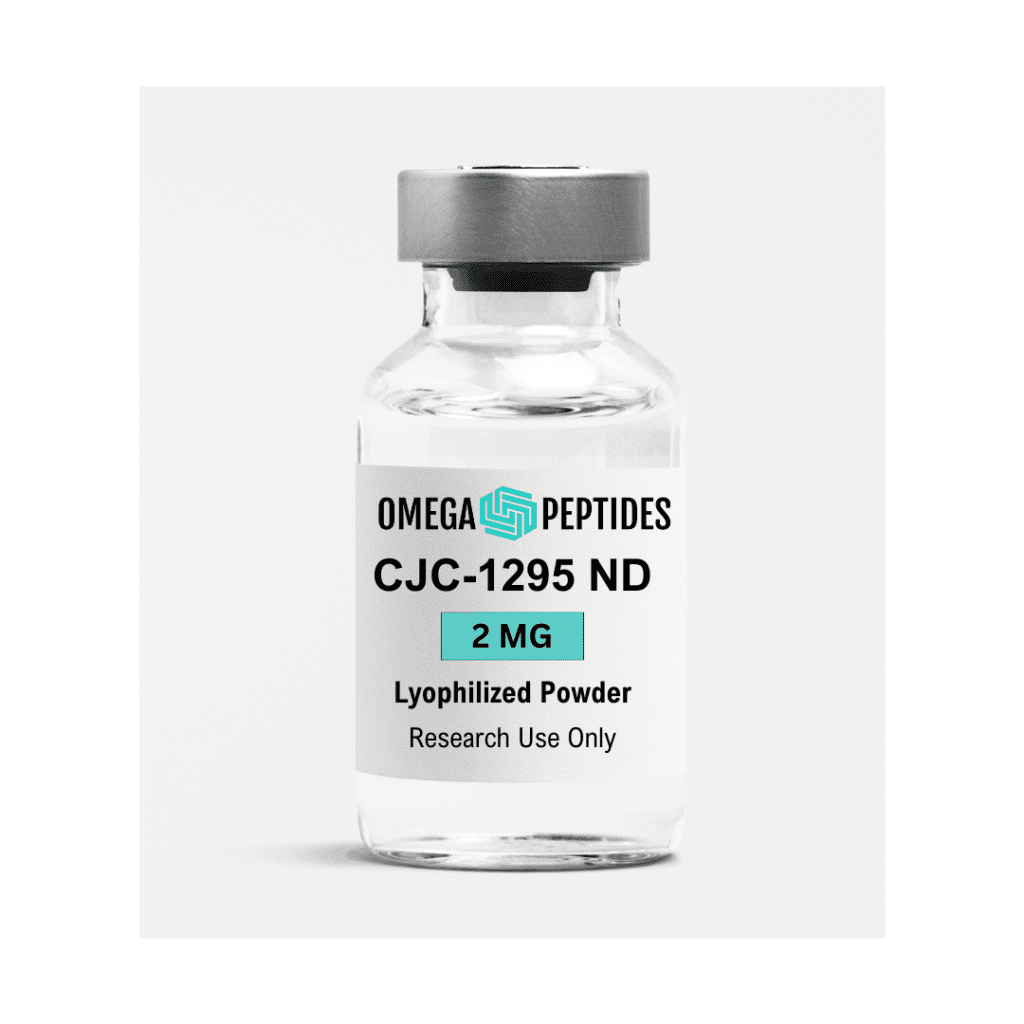Your cart is currently empty!
What is the Difference Between CJC-1295 Dac & No Dac?
The primary difference between CJC-1295 DAC and CJC-1295 No DAC lies in their chemical structure and how they are used to stimulate the release of growth hormone (GH). Both peptides are related to growth hormone-releasing hormone (GHRH), but they have different mechanisms and durations of action due to the presence or absence of the DAC (Drug Affinity Complex).
1. CJC-1295 DAC (with DAC)
- DAC stands for Drug Affinity Complex, which is a modification that extends the half-life of the peptide.
- Structure: CJC-1295 DAC has a large DAC molecule attached to the peptide, which allows it to bind to albumin in the bloodstream and prolong its activity.
- Duration of Action: The half-life of CJC-1295 DAC is significantly longer, typically around 8 days. This extended duration means that it requires less frequent administration (usually once a week).
- Usage: CJC-1295 DAC is beneficial for people who prefer less frequent injections, as its prolonged action provides sustained growth hormone release.
- Stimulation of Growth Hormone: It stimulates pulsatile secretion of growth hormone from the pituitary gland over a long period of time, which mimics natural growth hormone release patterns.
- Common Use: This version is often used for individuals looking for long-term growth hormone elevation with fewer injections.
2. CJC-1295 No DAC (without DAC)
- No DAC means that this version of CJC-1295 does not have the DAC modification.
- Structure: Without the DAC, this peptide does not have the albumin-binding capability, which means it is shorter-acting compared to CJC-1295 DAC.
- Duration of Action: The half-life of CJC-1295 No DAC is much shorter, typically around 30 minutes to 1 hour. This means it needs to be administered more frequently (typically every day or several times per week).
- Usage: CJC-1295 No DAC is more suited for people who want a short-term, quick-release effect and are willing to inject more frequently to maintain growth hormone levels.
- Stimulation of Growth Hormone: Like the DAC version, CJC-1295 No DAC also stimulates pulsatile secretion of growth hormone, but with a shorter duration.
- Common Use: This version is typically used by individuals who are looking for more immediate effects and are comfortable with more frequent injections.
Summary of Key Differences:
| Feature | CJC-1295 DAC | CJC-1295 No DAC |
|---|---|---|
| Duration of Action | Long-lasting (half-life ~8 days) | Short-lasting (half-life ~30 min – 1 hr) |
| Injection Frequency | Less frequent (once a week) | More frequent (daily or several times per week) |
| Chemical Modification | Contains DAC (Drug Affinity Complex) | No DAC; pure peptide |
| Binding | Binds to albumin, prolongs activity | Does not bind to albumin |
| Growth Hormone Release | Pulsatile, prolonged release | Pulsatile, shorter release |
| Common Use | Long-term GH elevation with fewer injections | Quick release, more immediate GH stimulation |
Which One to Choose?
- CJC-1295 DAC is ideal for those who prefer less frequent injections and want a longer-lasting effect of growth hormone release. It’s useful for people who are looking for consistent, sustained benefits from growth hormone stimulation.
- CJC-1295 No DAC is suited for individuals who are okay with more frequent injections and want to experience a faster effect in terms of growth hormone release, though they would need to inject more regularly.
Both peptides have similar mechanisms in terms of stimulating the pituitary gland to release growth hormone, but the DAC modification in CJC-1295 DAC is what sets them apart in terms of their half-life and the injection schedule required.
You might be interested in…

Categories
- BPC-157
- CJC-1295 (with DAC)
- CJC-1295 No Dac
- Epithalon
- Follistatin
- General Peptide
- GHK-cu (Copper Peptide)
- GLP-1/GIP
- GnRH (Gonadotropin-Releasing Hormone)
- HCG (Human Chorionic Gonadotropin)
- Ipamorelin
- Kisspeptin
- Melanotan II (MT2)
- MK-677 (Ibutamoren)
- MOTS-c
- NAD+
- Oxytocin
- Peptide Storage
- Peptides
- PT-141 (Bremelanotide)
- Research Dosages
- Research Supplies
- Retatrutide
- Selank
- Semaglutide
- SNAP-8
- TB500 (Thymosin Beta-4)
- Tirzepatide
- Topical Peptides

